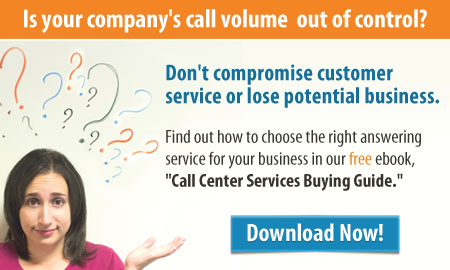Protection requires preparation.
 In an interconnected world, it has become increasingly common for even small businesses to get hit with PR nightmares that require a crisis communications plan. We are all only one click away from a potentially embarrassing and very public problem.
In an interconnected world, it has become increasingly common for even small businesses to get hit with PR nightmares that require a crisis communications plan. We are all only one click away from a potentially embarrassing and very public problem.
- Disgruntled employees have any number of online platforms they can use to sling mud.
- Clients can post negative reviews and complaints regardless of how legitimate they are.
- Hackers are targeting smaller businesses because their defenses are easier to overwhelm.
- Regulatory security requirements can force you to make announcements about the potential of a data breach even if you can’t confirm there actually was one.
One of our clients recently had to deal with the last situation. They determined that they had a security hole that may have exposed their client’s personal information including social security numbers and dates of birth. They had a legal requirement to disclose the potential of a data breach to their customers.

Concern: How to avoid overwhelming call volume that would tie up endless amounts of employee time and incurring huge labor costs.
Step 1: The first step was to review the letter that their attorney drafted to send to their clients. It achieved their goal of legal compliance, but it wasn’t geared toward reducing potential call volume. It needed to be visually cleaner and simpler. Bold headings for: what happened, who is affected, who is NOT affected, 4 specific precautionary steps to take, where to go for more information (website and a toll-free hotline). It was even important to remember to remove their main office number from their letterhead.
Step 2: The next step was to have a conference call with our customer’s managers to prepare a plan that addressed issues like – when to send the letter and make a public statement, who was going to handle media inquiries and how to prepare for calls generated from news stories on TV, radio and newspapers (these callers may not have received a letter).
Step 3: Our client needed advice on how to set up a process for handling potentially large unpredictable call volume in a way they could afford. We set up an automated toll-free hotline for them. The greeting clearly explained the criteria for who was affected and who was NOT (and could therefore hang up). For those that were, we explained that there were four specific precautionary steps they could take. After each step they could press a selection to repeat the instructions so they could write down telephone numbers and web addresses or they could press a selection to move on to the next step. At the end of the instructions they were told that if they had additional questions they could visit a special webpage or leave a message that included their name, telephone number and the spelling of their e-mail address. If they left a message, it was immediately e-mailed to our client.
It was the advanced planning that we were able to do with our client that made a HUGE difference in how clearly they communicated the situation, how effectively they minimized inquiries and avoided overwhelming their phone system and how well they controlled the manpower and cost required to handle the responses they did receive.
Do you have a plan for handling the call traffic from a negative or even a positive PR event?
This blog was written by Laurie Leonard, the President of SUITE 1000, a U.S. based national telephone answering service, inbound call center and outsourced call center service. Her company has specialized in handling legal intake, sales leads, email lead response, appointment scheduling, customer service and help desk calls for over 20 years.
Copyright © 2025 SUITE 1000. All rights reserved.


Laurie:
I continue to be impressed by the variety of ways you help your clients with a variety of business issues. Ultimately, they do relate to your being a call center, but you also helped this client with communication overall, and you were of service to THEIR clients in helping them with this.
Bravo! And thank you for sharing this important story for all businesses who might be affected in this way. Now they have a roadmap to begin thinking about this in their own companies.
Angie
Angie:
Thanks for the feedback. Our ultimate goal is to provide clients with the tools and advice required to keep them in CONTROL of their projects and their budget. This was a situation that could easily have gotten out of control without careful planning.
Laurie Leonard
SUITE 1000